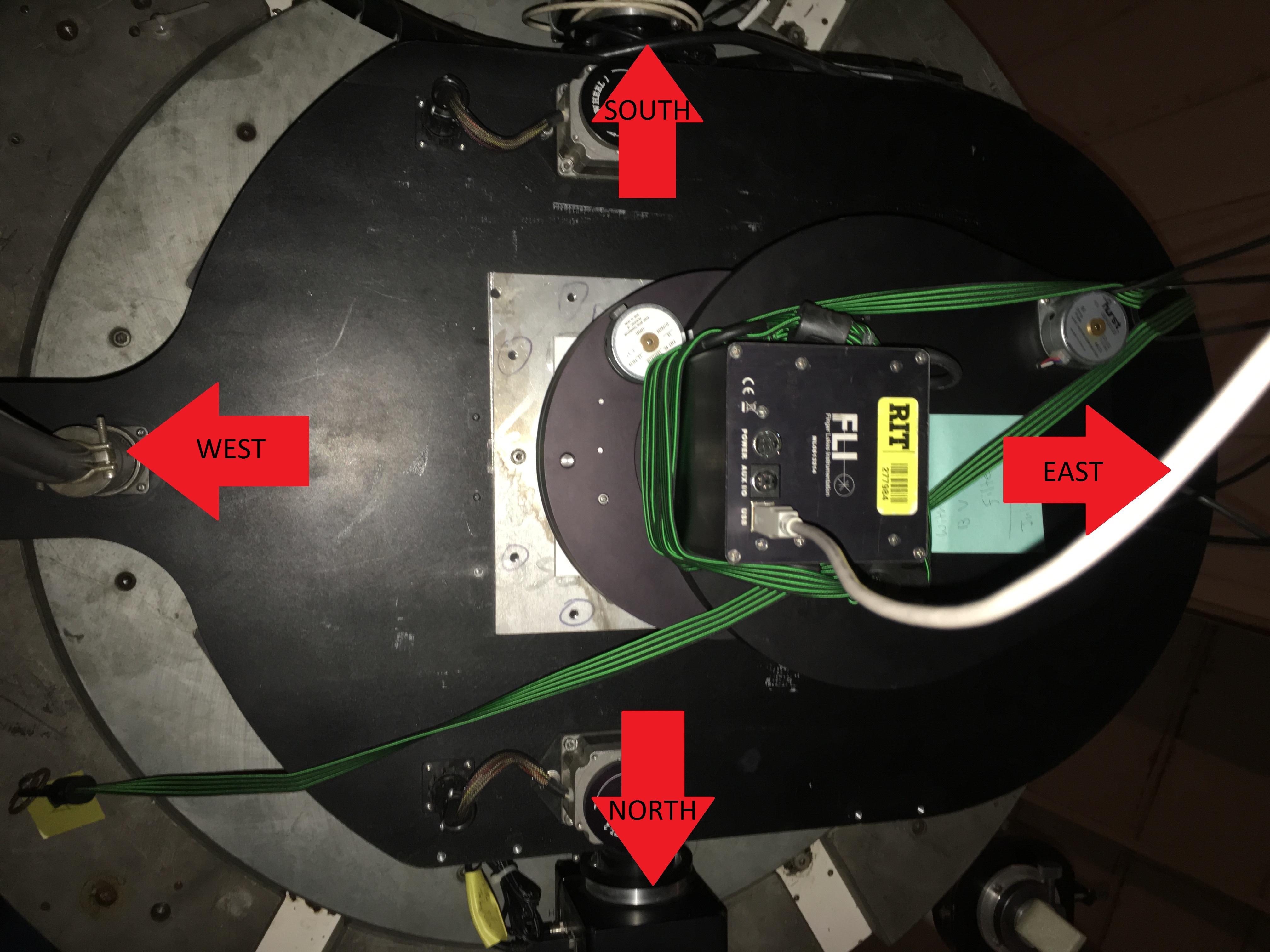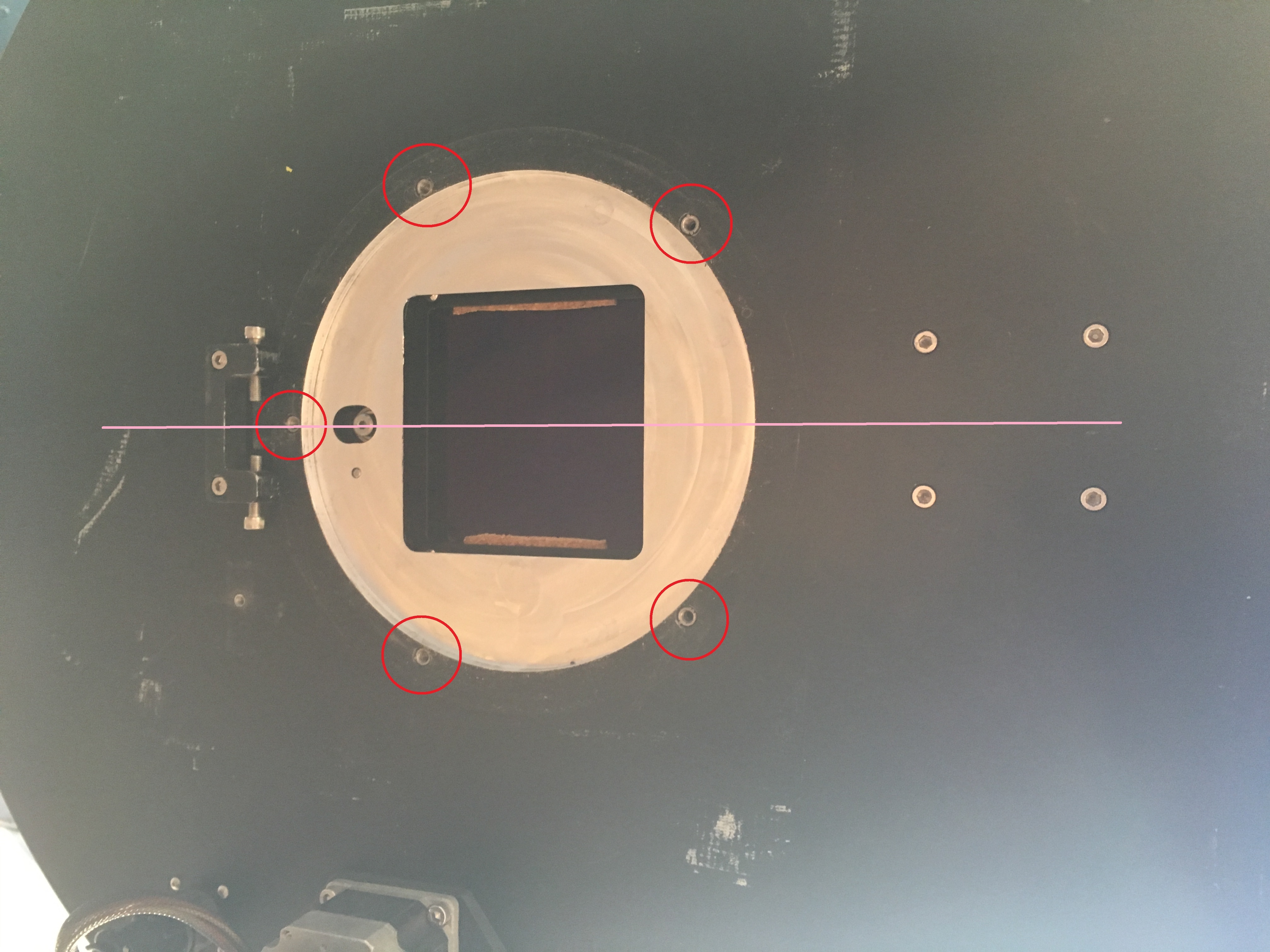Attaching an Instrument to the WIYN 0.9-m Telescope
Marko Ristic
Rochester Institute of Technology
January 11, 2019
This is a compilation of pictures and notes taken during the attachment of the RIT Polarization Camera on the WIYN 0.9-m telescope
in January, 2019.
The RIT Polarization Camera was the first external instrument to be attached to the telescope without substantial large-scale planning and coordination around the attachment of the instrument.
As such, these notes may be incomplete and may not necessarily represent the attachment of all types of instruments onto the telescope.
The purpose of these notes is to serve as a primer and general source of useful information for attaching instruments to the WIYN 0.9-m.
Ideally, these notes will serve as a comprehensive guide to attaching instruments to the WIYN 0.9-m telescope in the future.
Further expansion of these notes from others' experiences is welcomed and highly encouraged.
Instrument Attachment Pictures

Above is an image of the RIT polarization camera attached to the back of the filter-shutter assembly (FSA).
The four cardinal directions are identified relative to viewing the FSA from below.

Without the camera, the back of the FSA
is exposed and the bolt holes are made apparent. There are five (5) holes arranged in a pentagonal pattern.
Note that the bolt hole pattern is NOT SYMMETRIC IN ALL DIRECTIONS - there is only symmetry along the axis (pink line) halving the pentagon.
Below is a drawing of the WIYN 0.9-m bolt hole pattern as well as a link to view and download the drawing.
